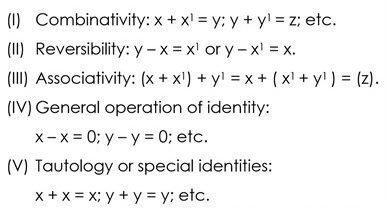
How to Deal with Scientific Concepts using Sign Reflex Mechanism
Language became digital when syllables were born with vowels. Syllables are discrete, finite and one-dimensional digital signals. It is likely that language is processed by the mammalian sign reflex circuitry: IF A THEN B logic to link signs and meanings one to one.
Syllables have become indelible thanks to writing and orthography, and linguistic information has become shared across space-time and developed continuously across generations, a phenomenon called civilization. The problem is that the innate one-to-one logic of reflex cannot keep up with the civilization. How can we deal with complexity using dualistic IF A THEN B logic?
Concept uses group logic of one-to-all. “It broke my concept of blue cheese” means “This is more delicious than all blue cheese I have ever taken”. In order to get a concept, there are a lot of experiences as well as thought operations such as generalization, comparison, requirement analysis, appreciation, etc. We cannot get a concept in a day.
For a scientific concept, not accompanying any episodic memories, we must use words rigorously with clear definitions. We need to learn and think in quiet environment of study or reading room. We need to think slowly and repeatedly. When we receive a scientific concept, we need to verify its definition and prevent a message game. If a concept has no definition, try to define it yourself. It may be rough at first. Gradually refine the definition. Ascertain when, by whom, and how the concept was conceived. Piaget’s formulae of group requirements should be applied. (Table-1) If it is complex, schematic diagram and/or reference model should be drawn. If you encounter an exception even in other scientific disciplines, don’t miss it: review the definition, correct it or eliminate the exception.

Internet search engines help you to discover interviews and oral histories to confirm the author’s humanity and credibility. If a work appears in the name of the author but is not published while the author is still alive, there is no guarantee that it is what the author wants. All knowledge and concepts are flashed and discovered by one single person: virtually experience the moment by reading author’s witnesses. Even authors acquire knowledge from the tabula rasa state, step by step. Read carefully to identify how each piece of knowledge was acquired. If there is a conflict between the writings of the same author, stop and reflect on why it happened. Any contradiction must not be overlooked. It may be a key to identify and overcome the enigma which the author could not solve. If there is anything different from what you think, do not dismiss it, but carefully check how the author arrived at the idea and how you yourself came to have the current idea. If you notice your mistake, correct it as soon as possible.
